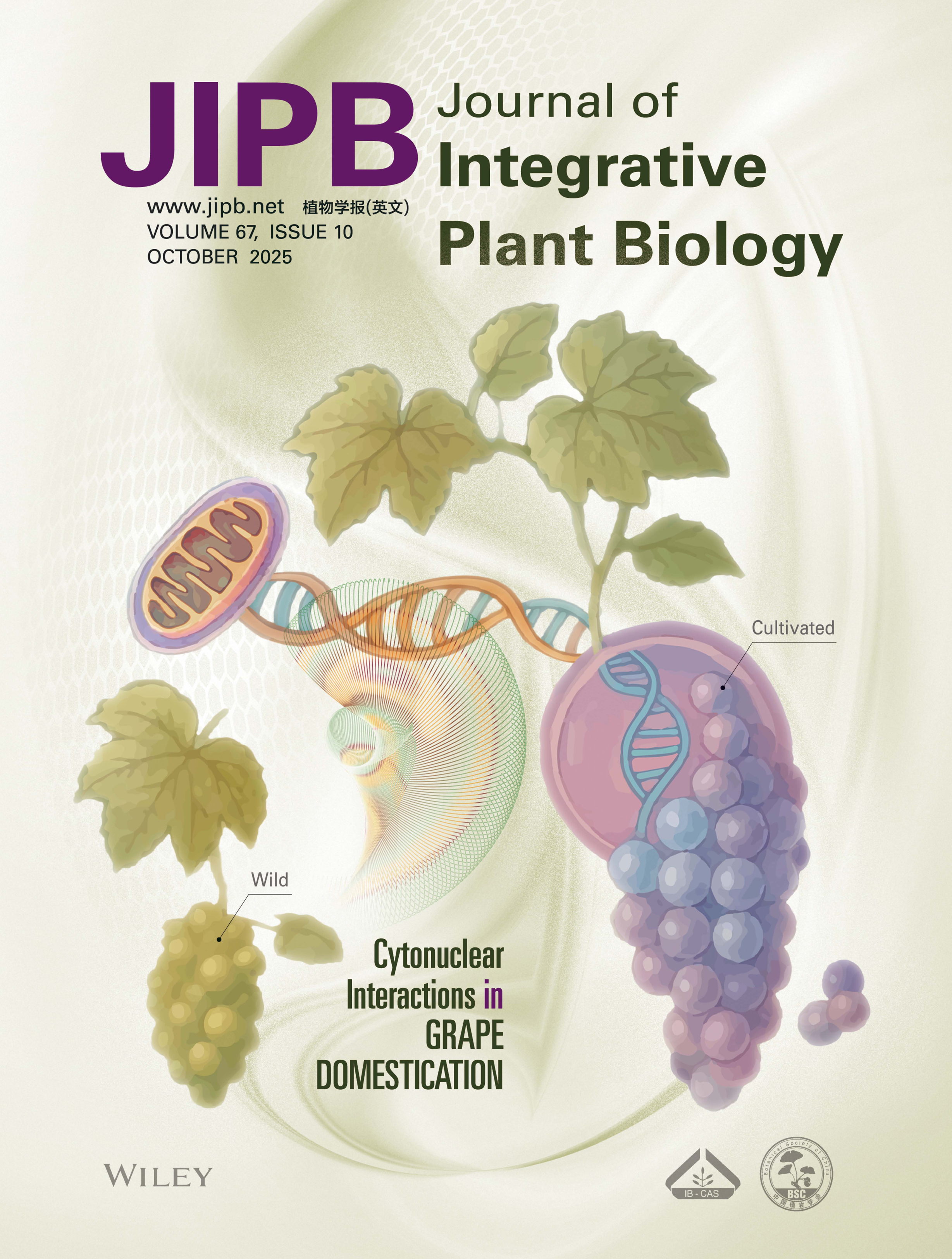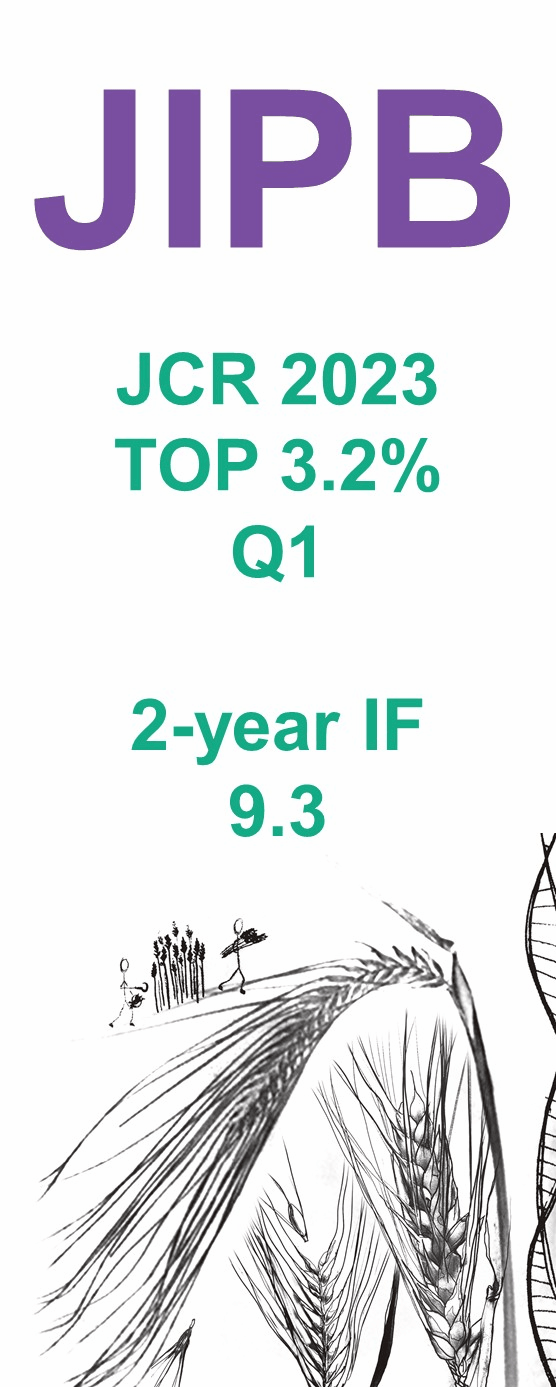Author: Ting Hou, Yanshuai Xu, Yang Dong, Jin Yao, Tianhao Zhang, Lianzhu Zhou, Xiangnian Su, Yi Zhang, Yingchun Zhang, Cheng Chen, Xiaoya Shi, Yuting Liu, Jiacui Li, Mengrui Du, Xinyue Fang, Sheng Yan, Sifan Yang, Wenrui Wang, Zhuyifu Chen, Siqi Qiao, Bilal Ahmad, Xiaodong Xu, Yanling Peng, Hua Xiao, Zhongxin Jin, Xiangpeng Leng, Cong Tan, Ling Tian, Chaochao Li, Yongfeng Zhou
J Integr Plant Biol 2025, 67 (10): 2686-2703.
Published Online:
DNAs from the cytoplasmic genomes often communicate with the nuclear genome during regulation, development, and evolution. However, the dynamics of cytonuclear interaction during crop domestication have still been rarely investigated. Here, we examine cytonuclear interactions during grapevine domestication using pan-mitogenome, pan-plastome, and haplotype-resolved nuclear genomes, all assembled from long-read sequences across 33 wild and domesticated grapevine accessions. Structural variation shaped the mitogenomic variation in gene contents, leading to duplications of three specific genes during grapevine domestication (one cox and two rpl genes). Extensive genomic signals of cytonuclear interactions were detected, including a total of 212–431 nuclear–mitochondrial segments (NUMTs) and 95–205 nuclear–plastid segments (NUPTs). These results showed that NUMTs were under strong selection and were more abundant in cultivated grapes, whereas NUPTs dominated in wild grapes, indicating the evolutionary trajectories of cytonuclear interactions during grape domestication. Through Genome-Wide Association Study (GWAS), we identified 84 candidate genes associated with mitochondrial–nuclear genome interactions. Among these, the PFD1 gene acts as a signaling regulator, modulating specific signaling pathways regulated by the mitochondria. Interestingly, there are significantly more cytonuclear interaction genes near NUMTs than in other genomic regions, suggesting NUMT-mediated interactions between the nuclear and mitochondrial genomes. Overall, our study provides evidence that NUMTs promote cytonuclear interaction during grapevine domestication, offering new insight into the impact of cytonuclear interactions on plant evolution, genetics, and breeding.




 Scan the QR code to view JIPB on WeChat
Scan the QR code to view JIPB on WeChat












